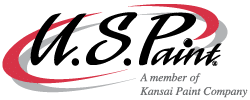Quality OEM Paint for Plastic
Quality OEM Paint for Plastic
As an original equipment manufacturer (OEM), you know the importance of choosing the correct paint for a specific type of surface. Not all paint is created equally. Paint products that work for metal elements aren’t always interchangeable for plastic surfaces. Even various plastics can interact with paints differently due to the surface properties and paintability issues. The entire paint process, from preparation to adhesion, is carefully curated by U.S. Paint professionals to deliver high-quality specialty paints and coatings.
U.S. Paint provides coatings for major OEMs in the automotive and power sports markets. These companies trust our professionals to provide quality, durable paint coverings that are designed to withstand indoor and outdoor elements. We have earned our OEM partners’ trust by dedicating research and years of experience to our paint for plastic process.
Speaking of experience, we asked Dave Cackowski, U.S. Paint Director of Technical Services, a few questions about the painting process for plastic.
1. What are the steps to painting plastic?
Parts cleaning and flashing removal are first. An old industry saying is, “Painting is 90% prep”. For some plastics, adhesion promoter or primer application is required to assist with adhesion or smoothing out imperfections in the plastic substrate. Each case is independently looked at, and testing validation is performed to ensure ALL OEM specifications are met.
Part geometry, rack density, and cycle time of each customer are evaluated to determine the best solvent package. Each customer receives a product that is customized for their production process (think of it as investing in a tailor made suit versus buying one off the rack).
2. Why should OEMs carefully consider the type of paint they choose for their plastic products?
Choosing the right paint for a process can have huge financial implications. If the paint doesn’t have a large “workability window,” the yield or % of good parts produced can be affected. For example, a competitor’s paint may be less expensive per gallon, but if the yield is low, the scrap cost and other processing costs can far outweigh the savings. U.S. Paint prides itself on having the lowest Total Part Cost compared to other paint vendors.
3. What can happen if the correct steps aren’t followed or the wrong type of paint is used on plastic products?
Incorrect application or choices of products can lead to field failures. Fortunately, U.S. Paint partners with its customers to perform testing and validation to ensure these never happen. Adhesion, color-fastness, mottle, and poor appearance are defects that can happen, but are avoided by partnering with the best – U.S. Paint.
4. Why is it important for companies to talk with a paint professional before choosing a paint for their plastic?
Speaking with the Subject Matter Experts for paint chemistry and application are imperative to creating a profitable and successful project for any painted parts supplier. U.S. Paint takes care to hire, train, and retain the best talent anywhere in the coatings world.
Proper preparation, conditions, and application are critical to the long-term success of plastic paint coatings. Poor paint application can not only affect your product, but also your bottom line. For a more in-depth look into the adverse effects of incorrect paint application for plastic, take a look at our blog post on Industrial Paint for Plastic.
U.S. Paint is proud to partner with OEMs across the nation and around the globe. Let us be your experts in specialty paints and coatings. Give us a call at 314-621-0525 or fill out our online contact form today.
“We are grateful for the business opportunities our customers provide, and through development and project planning, we help ensure our mutual success. Thanks for selecting us as a teammate.” – Dave Cackowski

